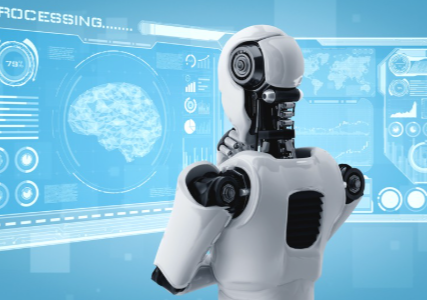The landscape of robotics is evolving rapidly, driven by technological advancements and the integration of artificial intelligence. Collaborative robots are streamlining manufacturing processes, while drones are redefining agricultural efficiency. Surgical assistants are enhancing healthcare delivery. These innovations raise critical questions about the future trajectory of robotics. What implications will these developments have on industries and society as a whole? The answers may reshape our understanding of human-machine interaction.
The Evolution of Robotics: A Brief History
As robotics continues to advance, understanding its historical context becomes essential; the evolution of robotics can be traced back to ancient civilizations, where simple automata sparked the imagination of inventors.
Early inventions, such as the mechanical birds of Hero of Alexandria, laid foundational concepts for automation.
As societies progressed, the military applications of robotics became prominent, particularly during the World Wars, where mechanized systems revolutionized warfare strategies.
Innovations like drones and remote-controlled vehicles emerged, enhancing operational capabilities while minimizing human risk.
This historical trajectory illustrates how robotics has consistently been intertwined with the pursuit of efficiency and safety, reflecting humanity’s desire for freedom from laborious tasks and hazardous environments.
The interplay between invention and necessity continues to shape the future of robotics.
Read more: The Role of Big Data in Business Decision Making
Current Innovations in Robotics Across Industries
The trajectory of robotics has led to remarkable innovations across various industries, reflecting a blend of technological advancements and practical applications.
In industrial automation, collaborative robots enhance efficiency and precision in manufacturing processes.
Healthcare robotics, including surgical assistants and robotic prosthetics, significantly improve patient outcomes and rehabilitation.
Agricultural drones are revolutionizing farming by enabling precision agriculture, optimizing crop monitoring and pesticide application.
Service robots are transforming customer experiences in hospitality and retail sectors, providing assistance and enhancing service delivery.
Meanwhile, autonomous vehicles are advancing transportation safety and efficiency, paving the way for smart urban mobility.
Lastly, robotic exoskeletons empower individuals with mobility impairments, illustrating the profound impact of robotics on societal well-being and autonomy.
The Role of Artificial Intelligence in Robotics
While robotics has traditionally relied on pre-programmed instructions, the integration of artificial intelligence (AI) has transformed the field by enabling machines to learn, adapt, and make autonomous decisions.
Machine learning algorithms empower robots to analyze vast datasets, improving their performance in real-time applications. This capability allows autonomous systems to navigate complex environments, enhancing their ability to interact with humans and other machines.
Future Trends and Possibilities in Robotics
With advancements in technology accelerating at an unprecedented pace, the future of robotics promises to be marked by significant innovations that will redefine industry standards and societal interactions.
Humanoid robots are poised to enhance human-robot collaboration, bringing empathy and adaptability to sectors such as healthcare and customer service.
Meanwhile, autonomous systems are set to revolutionize logistics and transportation, with the potential to mitigate human error and increase efficiency.
As machine learning and AI continue to evolve, the integration of these technologies will enable robots to learn from their environments, fostering greater autonomy and decision-making capabilities.
Conclusion
In conclusion, the landscape of robotics is poised for unprecedented transformation, driven by innovative technologies and the integration of artificial intelligence. As collaborative robots enhance efficiency in manufacturing and autonomous systems revolutionize logistics, the potential for societal impact is immense. While a 19th-century inventor might have marveled at the prospect of machines that learn and adapt, today’s advancements suggest a future where robots not only assist but also enrich human experiences across diverse sectors.




 Understanding Ethereum Price USD: What Factors Affect the Exchange Rate
Understanding Ethereum Price USD: What Factors Affect the Exchange Rate